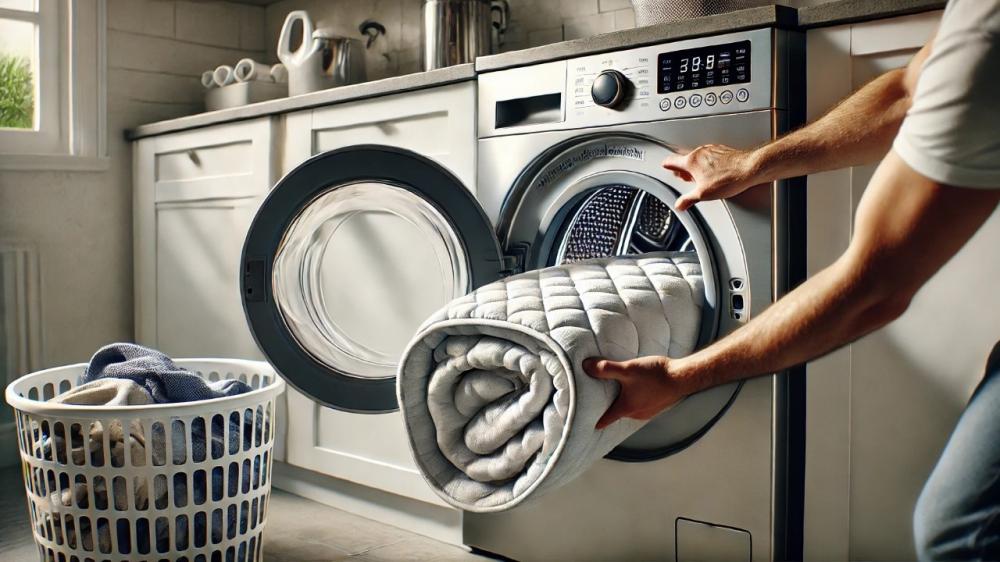
How to Clean and Care for Your Mattress Protector: A Comprehensive Guide
A mattress protector is a vital accessory for maintaining a clean, comfortable, and hygienic sleep environment. It acts as a barrier against dust mites, allergens, spills, and stains, keeping your mattress in top condition.
However, just like any other bedding item, your mattress protector requires regular care to ensure its longevity and continued effectiveness.
In this guide, we will walk you through the best practices for cleaning and caring for your mattress protector, helping you maintain a fresh and healthy sleep surface.
Why Cleaning Your Mattress Protector is Important
Over time, mattress protectors accumulate dust, sweat, dead skin cells, and other allergens. Regular cleaning not only extends the life of your protector but also ensures that your sleeping area remains clean and free from irritants.
Whether your mattress protector is made from cotton, polyester, or a hybrid material, the proper washing and drying methods are essential for preserving its protective capabilities.
How to Wash Your Mattress Protector
Follow these essential steps to clean your mattress protector effectively and safely:
- Read the Care Label
- Before washing, always check the care label of your mattress protector. The label contains specific instructions regarding temperature, detergent type, and drying methods, ensuring that you don't inadvertently damage the fabric.
- Wash Before First Use
- It is highly recommended to wash your mattress protector before using it for the first time. This step helps eliminate any chemicals or residues from the manufacturing process and ensures the protector fits properly after any shrinkage.
- Frequency of Washing
- For optimal hygiene, wash your mattress protector every 1 to 4 weeks. If you have allergies, asthma, or pets, washing it more frequently may be necessary to prevent the buildup of allergens like dust mites or pet dander.
- Washing Machine Settings
- Most mattress protectors can be washed in a machine, but it is essential to use the correct settings. Machine wash at a temperature of 30° - 40°C (86° - 104°F) using a non-bio detergent (enzyme-free detergent). Avoid using too much detergent, as it may clog up your washing machine and leave residue in the fabric.
- Avoid Fabric Softener
- Although fabric softeners may make your protector feel soft, they can reduce its absorbency, especially in cotton protectors. It’s best to avoid fabric softener altogether. If you must use it, do so sparingly.
How to Dry Your Mattress Protector
Proper drying is just as important as washing to maintain the integrity of your mattress protector. Here’s how to dry it correctly:
- Tumble Drying
- Many cotton mattress protectors are safe for tumble drying. Always check the care label for the maximum temperature setting to avoid damaging the fabric. To speed up the drying process and add extra softness, you can use Wool Dryer Balls. They help reduce drying time and avoid the use of chemical softeners like dryer sheets.
- Line Drying
- If you prefer not to use a tumble dryer, you can line dry your mattress protector. Be sure to hang it in a well-ventilated area, preferably in direct sunlight, which can also help eliminate bacteria and odors.
- Avoid Ironing
- Mattress protectors should never be ironed. The heat can damage the fabric, squashing the filling or the skirt of the protector, reducing its effectiveness.
Top Tips for Washing and Caring for Your Mattress Protector
To extend the lifespan of your mattress protector and keep it in excellent condition, follow these additional tips:
- Wash Similar Fabrics Together
- When washing your mattress protector, separate it from other laundry items, especially those made from different materials. Washing similar fabrics together ensures that they are cleaned effectively and at the same rate.
- Avoid Overloading the Washer or Dryer
- Do not overload your washing machine or tumble dryer. Giving the protector enough space will allow for more thorough cleaning and drying.
- Use Environmentally-Friendly Detergents
- Opt for a high-quality laundry detergent that works well at lower temperatures, as it is more environmentally friendly and gentler on your mattress protector.
- Ensure Full Drying
- Before putting your protector back on the bed or storing it, ensure that it is completely dry. Storing a damp mattress protector can lead to mildew growth, which can damage both the protector and the mattress.
Conclusion
Regular cleaning of your mattress protector is crucial for maintaining a healthy and comfortable sleeping environment. By following the washing and drying guidelines outlined above, you can ensure that your protector stays in optimal condition, extends the life of your mattress, and continues to offer protection against allergens, dust mites, and spills. Remember to wash it every 1 to 4 weeks, use the right detergent, and avoid fabric softeners for the best results. By caring for your mattress protector properly, you’ll ensure that your bed remains a clean, fresh, and comfortable place to sleep for years to come.

